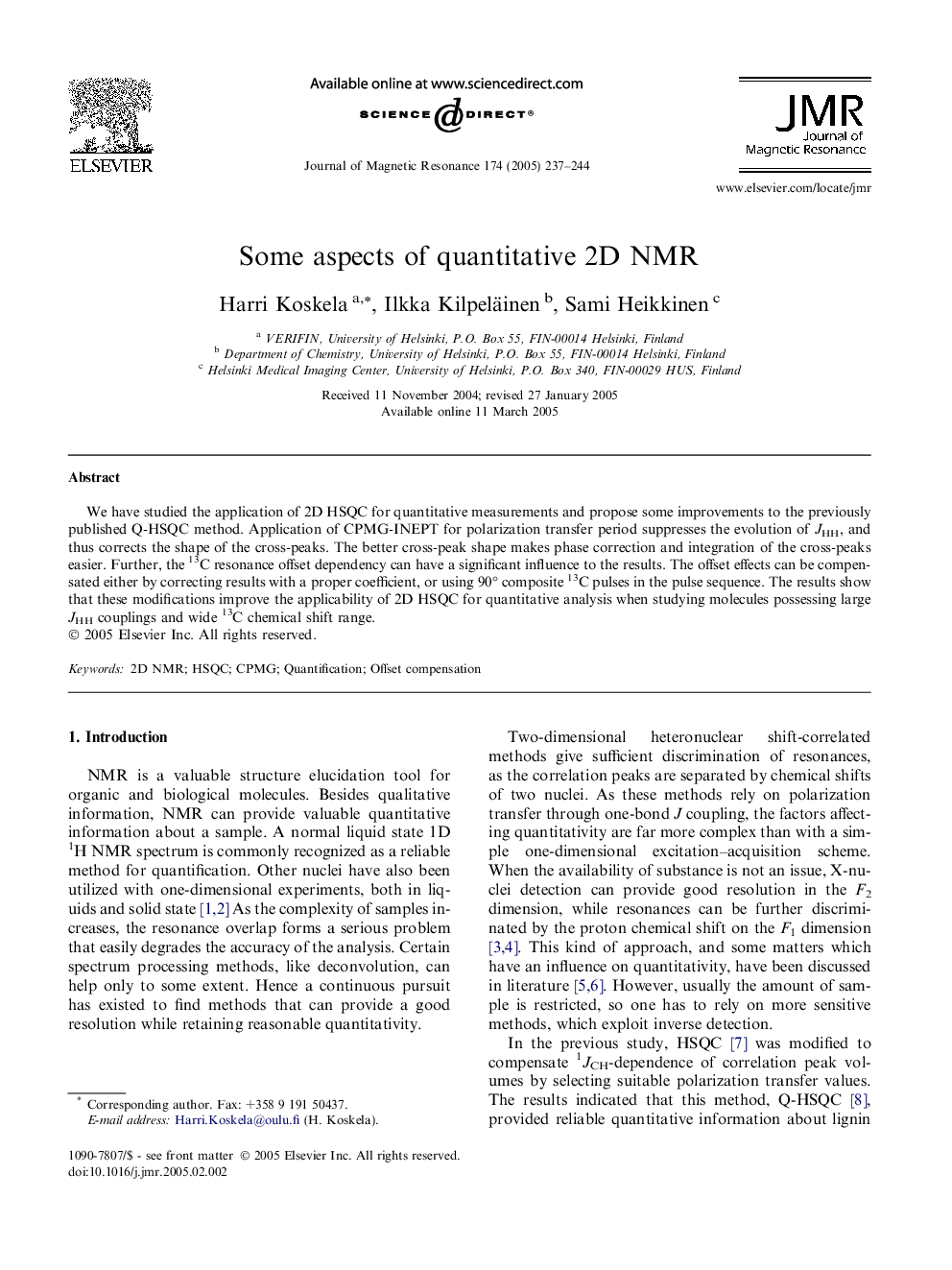| Article ID | Journal | Published Year | Pages | File Type |
|---|---|---|---|---|
| 9587506 | Journal of Magnetic Resonance | 2005 | 8 Pages |
Abstract
We have studied the application of 2D HSQC for quantitative measurements and propose some improvements to the previously published Q-HSQC method. Application of CPMG-INEPT for polarization transfer period suppresses the evolution of JHH, and thus corrects the shape of the cross-peaks. The better cross-peak shape makes phase correction and integration of the cross-peaks easier. Further, the 13C resonance offset dependency can have a significant influence to the results. The offset effects can be compensated either by correcting results with a proper coefficient, or using 90° composite 13C pulses in the pulse sequence. The results show that these modifications improve the applicability of 2D HSQC for quantitative analysis when studying molecules possessing large JHH couplings and wide 13C chemical shift range.
Related Topics
Physical Sciences and Engineering
Chemistry
Physical and Theoretical Chemistry
Authors
Harri Koskela, Ilkka Kilpeläinen, Sami Heikkinen,
